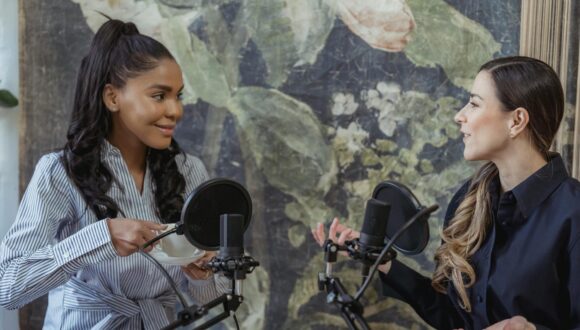Our internal research reveals that customers leveraging Highspot Training & Coaching report a 22% increase in average deal size. So, how can you optimize your training and coaching efforts to impact business results and gain buy-in for enablement from your executive leaders?
Shawnna Sumaoang: Hi and welcome to the Win Win Podcast. I’m your host, Shawnna Sumaoang. Join us as we dive into changing trends in the workplace and how to navigate them successfully. Here to discuss this topic is Chelsey Groh, director of enablement and training at Motus. Thanks for joining, Chelsey! I’d love for you to tell us about yourself, your background, and your role.
Chelsey Groh: Thank you, Shawnna. Thanks for having me. I’ve been specifically dedicated to enablement and training for about the last three years at Motus. Prior to that, it’s been some sort of version of my role. We all know that enablement is always an evolving force and it looks different at every organization. The last three years it’s been the main focus of what I do on the day-to-day. I am the director of learning and enablement at Motus. We’re a reimbursement company and prior to that, I’ve had about 15 years of SaaS experience in sales.
SS: Well, Chelsea, thank you so much for joining us. It sounds like you’ve had a fantastic journey in your enablement career, and I know that you’re about a year into your journey with Highspot. I would love for you to tell us a little bit about that journey so far, and in particular, what were some of the pain points you were experiencing before Highspot?
CG: Prior to Highspot, we were seeing a lot of problems in getting things in a really dedicated space that was highly accessible from an enablement perspective, not even just for our selling roles, but across the organization. We were looking for something that we could easily report on and create a combined space that as we move our enablement journey forward at Motus, encompasses everything that we’re doing. One of the things that really attracted us when we were looking at Highspot, as simple as it sounds, was the fact that we could seamlessly move everything over from SharePoint and correct our versioning issue in the blink of an eye. I’d love to tell you that it was this big masterful plan, but it was all made up of the smallest details that paint us on a day-to-day basis that made Highspot a no-brainer for us.
SS: Well, I still love to hear that all of those details definitely add up. How have you been able to solve some of those challenges since you’ve implemented Highspot?
CG: Some of the big things that we’ve been able to solve are number one, we finally have an eye on exactly what our sellers are using day in and day out and what’s productive from that usage. The other thing that we’re able to do is create a streamlined message across Motus as opposed to really every department being siloed and creating their own and marching with that.
We’re finally starting to see this congruent message across the way that we’ve so longed for, especially with the evolving product lines and things that we have going on. Motus isn’t what it was even a year ago. We’re constantly growing. What we’ve been able to do and able to accomplish within Highspot is to create an environment where people can onboard successfully and quickly. We’ve seen a more cohesive voice across the way, but we’ve also seen an environment where people are hungry and eager to get in and actually see the data that’s available that comes with a platform like Highspot.
SS: I love hearing that. You actually shared with your Highspot team that the platform is actually now a core part of your tech stack. As I mentioned in the introduction, your C-suite is fully bought in on its value. What are your best practices for gaining buy-in from your executive stakeholders?
CG: To be honest, it comes from a fundamental point of how we run our shop here at Motus. We do everything with the utmost business needs to come front and forward. I think anytime you’re championing an initiative like this, you have to start from the top. Whenever we purchased Highspot, it wasn’t something that we just looked at and said, yes, these services are sellers. We looked at a long-term strategic vision across the business and how it could expand. We saw that Highspot could service those needs.
Having the executive level buy-in that early and really being able to tell that story and show how it demonstrates to accomplish those business initiatives has allowed us to continue that excitement and that buy-in from the top down. I would say it’s just as simple as that. Including them at the beginning and really showcasing how it solves those business needs. There are a lot of times that we put in these features and how wonderful it’s going to be for our people and things like that, but when we actually take a step back and tie it to what we’re really supposed to be accomplished within the business, it just makes sense.
SS: Wonderful. Now, what is your advice for continuing to prove the impact of enablement on the business and then communicating that impact to your executive leaders?
CG: When it comes down to it, we’re all about how we can impact the revenue to the organization and tie it back to those business needs as I discussed before. It’s also about really speaking the language of the C-Suite and what matters to them. We want to create a highly repeatable process so that our outcomes are not only sustainable but predictable. Translating those training initiatives and how they tie to specific business KPIs and the metrics, and also tying the activity in Highspot and how those contribute to those, it’s not just a cost, but it’s that strategic alignment that we talked about before. Really building a case and showcasing how we can tie to those measurements. How we can create that repeatable process, but also speak the language of the C-suite of what matters to them?
SS: I think those are key points and great advice. One area where you’ve already begun to see amazing results with Highspot is through training and coaching. In fact, you achieved 83 percent active participation. I’d love to understand from you, from your perspective, what good training and coaching look like.
CG: I have to attribute a large amount to my team with Maggie and Somi. Maggie is our senior training manager and Somi is our instructional designer. I have a highly impactful team that is able to address the vision of what we’ve come up with in collaborating with the business need that allows an output that is not only engaging for someone who’s participating in the learning or the enablement but also takes into account the actual need that it’s fulfilling.
I think the biggest reason we see such high adoption is number one, that executive buy-in that we’ve talked about, kind of is this trend across the podcast. Anytime you have a champion from the top down, of course, you’re going to see higher completion rates. It’s important to the business. They are also going to be vetted in that effort.
Number two is creating meaningful material. I often hear people saying, well, who doesn’t love training? Just create a training for it. Everyone would love to be enabled. Everyone would love to learn more. That’s not always the case. There’s so often that we throw training or enablement at that thinking that that’s going to be the solution, but being very thoughtful in that process and really understanding what you’re creating what that expected outcome is, and what you want to achieve. If you don’t have an expected outcome and you don’t know what you expect to get from that, there’s no point. Just stop.
SS: I couldn’t agree more. How do you go about using Highspot to deliver more effective training and coaching?
CG: Well, I think what I like most about Highspot is the fact that we’re not limited to even just your traditional LMS. Training and Coaching is a wonderful platform and we have the ability to build out not only aesthetically pleasing training, but we have the ability to coach and train through other avenues as well. Training and coaching, of course, we use for onboarding. We build out these wonderful learning paths that are meaningful to the individual that’s participating, but going beyond that, we have sales plays and all of these wonderful opportunities to educate our people on the process and build out that understanding that I think comes full circle.
I think that’s one of the things that whenever we look at the training and coaching platform and we look at Highspot as a whole it’s not just the opportunity for one-off learning. It’s the ability to build more.
SS: I love that. Now, in the last few months, you’ve also seen a 32% increase in course completion in Highspot, which again is fantastic. What are your best practices for motivating rep engagement in your training and coaching programs?
CG: That’s hard sometimes. We have a lot of reps at varying skill levels and at some point reps go, I know it. I’ve got it. I’m top performing. I’m the president’s club. I’m a peak performer. I’ve got it all. One of the things that we’ve really focused on in the last couple of years is creating an environment where learning is not only a part of what we do, but it’s a fundamental part of our culture, and we want to expand on those talents.
There’s so much of that that contributes to our course completion average, but not only that, with that openness and that vulnerability that we are expecting from our people. They’re hungry to learn. There’s so much more that people don’t understand that we often overlook. I think in this role and go, gosh, nobody’s going to want to do this. We’ve already asked for their time in the last month, things like that. Many people are looking to consume more knowledge and want to have those growth opportunities within their roles. It comes from things like this. I think when it’s communicated and it’s part of your strategy, you get people more excited to get in and complete those learnings.
SS: I love that. Now, one thing I wanted to make sure I got a chance to chat with you about was a recent thread that you shared on LinkedIn about best practices for training sales leaders. Why is leadership training so important and how does that differ from rep training?
CG: I often like to joke that they’re not all that different, but they are. Well, let’s start with the first part of that question. The reason that sales leadership is so important is that if you don’t have buy-in from the leaders in enablement, we’re not allowed to be with our sellers day in and day out. That coaching is sustained by their sales leaders, so if we do not take the time to actually get them up to speed on the initiative and the expected outcomes and how they are supposed to be holding their people accountable and really the measurable outcomes for the business, it’s a wasted opportunity.
It’s something that you’re going to see great success out of potentially for like the first 90 days, and then you’re going to see it fizzle. When we don’t take the time to bring our sales leaders up to speed, specifically on their skills that they need as leaders, but also within whatever initiatives we’re enabling on you’re not going to see continued success and you’re going to find yourself beating your head up against the board a lot trying to spin up these expected outcomes. Again, you find yourself really frustrated.
I think the second part of that is, yes, your leaders are at an elevated learning level. That’s why they are where they are. It’s not so much about teaching them the fundamental skills so much as it is aligning the process that you’re teaching along with the information that’s going out as well. So often we get really comfortable with our leadership teams and I mean, I’m guilty of it as well here where we’re finally getting an ebb and flow where they’re like, we trust you put out whatever, and then we put out whatever and then your sellers are stuck learning and wondering why their leaders aren’t keeping up. You have to keep it as an important and crucial part as you roll out these new initiatives.
SS: Absolutely. You hit on something there because as you said, a key part of equipping sales leaders for success is ensuring that they’re prepared to then coach their teams. How do you train and prepare leaders to be effective coaches?
CG: That’s a really loaded question. The way that we are training our coaches today to be effective is not only addressing the KPIs and the metrics that they’re holding their teams to but also how to really encourage and motivate their people at an individual level. We do a lot of different things here at Motus. We utilize Gong, we utilize Highspot, and we also utilize a tool called Predictive Index that is issued by our PeopleOps team. Understanding how to access your people on a level that makes sense to them, but also, how do I coach and what does that look like here at Motus? We need to utilize our tools appropriately.
One of the big initiatives that we’ve actually taken on this quarter is we’re getting really heavily involved in Gong and Highspot and really understanding how to utilize those scorecards and meeting notes and some of the great features that have also come out in Gong to enhance our coaching experience for our sellers. The hope is not only to create more effective coaches, but it’s also to create reps that are comfortable with assessing their own skills. To us, that creates a stronger team and it also allows our leaders to get back into some of the details and some of the more fundamental aspects of their roles as a leader.
SS: I love that, Chelsea, last question for you. As you continue to leverage Highspot as a growth lever for your company, what is the value that you envision enablement having for the organization as a whole beyond sales?
CG: In utilizing Highspot for our entire organization, as we expand our enablement efforts into the organization from customer success to product development, whatever it might be our well-equipped team needs better outcomes across the board. In order for us to create those better outcomes and really understand what that looks like, it starts at the beginning. You hear this trend of everboarding, right, which is essentially ongoing enablement. It goes beyond onboarding, and by having everyone in one system and enabling the org across the way and streamlining that communication and that voice, that’s going to give us the business outcome that we’re looking for and I believe in a much more rapid pace than what we could have ever expected.
It’s about fostering that culture of learning and development and enablement that we talked about earlier but making sure that it permeates every department. We started at sales and I think I left that out of my intro. I started in sales enablement at Motus and now I’m over enablement for the entire org here. That just goes to show you how important it is to have that streamlined focus and voice across the way that’s going to provide a valuable and meaningful impact in those changed behaviors that you’re looking for at an org-wide level.
SS: Well, again, congratulations on a fantastic trajectory there at Motus. Chelsea, thank you so much for joining this podcast.
CG: Thank you for having me.
SS: To our audience, thank you for listening to this episode of the Win Win Podcast. Be sure to tune in next time for more insights on how you can maximize enablement success with Highspot.



